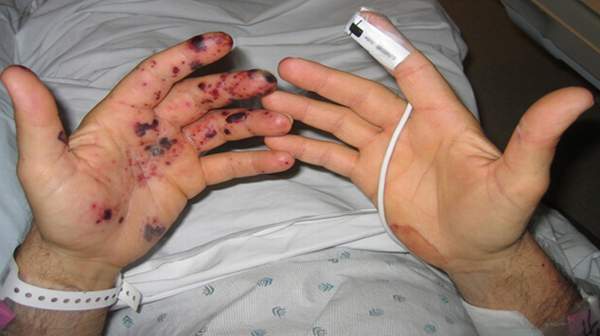What's in this article?
Endocarditis is an infection of the inner lining of your heart (endocardium).
Endocarditis generally occurs when bacteria or other germs from another part of your body, such as your mouth, spread through your bloodstream and attach to damaged areas in your heart. Left untreated, endocarditis can damage or destroy your heart valves and can lead to life-threatening complications. Treatments for endocarditis include antibiotics and, in certain cases, surgery.
Endocarditis is uncommon in people with healthy hearts. People at greatest risk of endocarditis have damaged heart valves, artificial heart valves or other heart defects.
Causes
Endocarditis can involve the heart muscle, heart valves, or lining of the heart. Some people who develop endocarditis have a:
- Birth defect of the heart
- Damaged or abnormal heart valve
- History of endocarditis
- New heart valve after surgery
Endocarditis begins when germs enter the bloodstream and then travel to the heart.
- Bacterial infection is the most common cause of endocarditis.
- Endocarditis can also be caused by fungi, such as Candida.
- In some cases, no cause can be found.
Germs are most likely to enter the bloodstream during:
- Central venous access lines
- Injection drug use, from the use of unclean (unsterile) needles
- Recent dental surgery
- Other surgeries or minor procedures to the breathing tract, urinary tract, infected skin, or bones and muscles
What are the symptoms?
Symptoms may appear quickly, within a few days of infection. In other cases, they may develop more slowly. The symptoms will get worse as the bacteria or fungi grow in your heart.
Symptoms may include:
- Flu-like symptoms such as fever, chills, night sweats, and fatigue. These are often the first symptoms.
- Weight loss.
- Muscle or joint pain.
- Lasting cough and shortness of breath.
- Blood under the fingernails or tiny purple and red spots under the skin.
Endocarditis facts
- Endocarditis is an inflammation of the valves of the heart.
- Endocarditis is often caused by the growth of bacteria on one of theheart valves, leading to a mass known as a vegetation.
- Symptoms can be nonspecific and include fever, malaise, shortness of breath, and weakness.
- People with existing diseases of the heart valves and people who have undergone heart valve replacements are at an increased risk of developing endocarditis.
- The most accurate method of detecting the valve vegetations of endocarditis is with a procedure called transesophageal echocardiography (TEE).
- The treatment for endocarditis consists of aggressive antibiotics, generally given intravenously, usually for 4 to 6 weeks.
- The duration and intensity of treatment depends on the severity of the infection and the type of bacterial organism responsible.
- In severe cases that damage the heart valves, surgical replacement of the valve may be necessary.
Treating endocarditis
Endocarditis is treated with a course of antibiotics given via a drip. You will need to be admitted to hospital for this.
Around one in five people will also need surgery to repair or replace a damaged heart valve or drain away any abscesses that develop.
Endocarditis is a serious illness, especially if complications develop. Even with the highest standard of medical care the risk of dying is high at around one in five. Early diagnosis and treatment is vital to improve the outlook for the condition.
What happens if endocarditis is left untreated, or if treatment is delayed?
The chances of complications are much greater. If the valves are damaged there is a growing risk of heart failure.Arrhythmia is another complication, because the heart’s rhythms may be affected by endocarditis. As endocarditis is an infection, the infection itself can spread within the heart and to other parts of the body, such as the kidneys, lungs and the brain. If the vegetations break off they can be carried into the bloodstream to other parts of the body and cause infections and abscesses elsewhere. A vegetation that finds its way to the brain and gets stuck there can cause stroke or blindness. A large vegetation can get stuck in an artery and block bloodflow.





